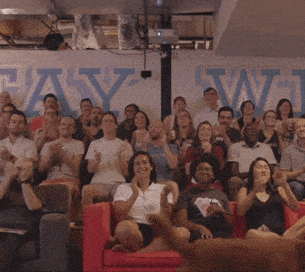Yum.
I first had the infamous Chickenjoy in Manila while on a family trip. I was ten years old. I thought it was okay. At the time, I didn’t get it. Sweet and savory spaghetti alongside fried chicken? I liked them separately. Together, they didn’t make sense—at least, not to me.
Years later, as an investor, I saw Chickenjoy in a different light. What Jollibee had done wasn’t just about selling fried chicken—it was about finding product-market fit so precisely that it built an empire. More than that, it created a new category by fusing familiar flavors in an unfamiliar way. The lesson? The biggest business opportunities often come not from invention but from remixing what already exists.
Finding the Consumer Sweet Spot
Jollibee didn’t start as a fried chicken brand. When Tony Tan Caktiong founded it in 1978, it was an ice cream shop. But the company listened to consumer demand, pivoting toward hot meals. By 1980, Jollibee introduced Chickenjoy—a crispy, juicy fried chicken served with gravy, designed to appeal to the Filipino palate.
It worked. Chickenjoy wasn’t just another fried chicken—it was a deeply localized take on something familiar, tweaked to suit regional tastes. It had the crunch of American fast food but the seasoning and dipping experience Filipinos craved.
In the startup world, product-market fit happens when customers pull a product from you, rather than you pushing it onto them. Chickenjoy was that pull. It became the backbone of Jollibee’s menu, the item that created repeat customers. Just as Nike had the Air Jordan and Apple had the iPhone, Jollibee had Chickenjoy—a single product that propelled a global expansion.
The Power of a Mashup: Creating a New Segment
At ten years old, I didn’t appreciate what Jollibee was doing. But as an investor, I see it clearly: they found an intersection no one else had explored.
The brilliance of Chickenjoy wasn’t just the chicken. It was the way Jollibee mashed up familiar formats into something entirely new. Fried chicken with sweet-style spaghetti? That wasn’t a standard combo. But to Filipinos, it worked. It blended American fast food with Filipino comfort food, creating something nostalgic and indulgent at the same time.
This is how great businesses emerge—not by competing head-to-head, but by remixing and localizing. Tesla wasn’t the first to make electric cars, but it combined luxury, performance, and software in a way no one else had. TikTok wasn’t the first video platform, but it fused music, social media, and bite-sized content into an entirely new experience.
Jollibee’s approach gave it an edge over global competitors like McDonald’s and KFC in its home market—and eventually, worldwide. Instead of copying Western fast food, it redefined it.
Building a Brand Through Taste Ownership
Chickenjoy’s success wasn’t a one-time hit. It became a taste people craved, and that’s where sustainable growth happens.
When a company owns a taste, it builds emotional loyalty. Filipino immigrants took that craving with them, creating built-in demand in cities like Los Angeles, Toronto, and Dubai. When Jollibee expanded abroad, it wasn’t just selling food; it was selling a connection to home.
For investors, this is the ultimate win: a product with built-in repeatability and brand stickiness. Chickenjoy didn’t just build Jollibee—it made it defensible.
The gold standard of business news
Morning Brew is transforming the way working professionals consume business news.
They skip the jargon and lengthy stories, and instead serve up the news impacting your life and career with a hint of wit and humor. This way, you’ll actually enjoy reading the news—and the information sticks.
Best part? Morning Brew’s newsletter is completely free. Sign up in just 10 seconds and if you realize that you prefer long, dense, and boring business news—you can always go back to it.
The Takeaway for Founders
The lesson from Chickenjoy is clear: The biggest opportunities come from finding intersections, not just competing in existing categories.
Jollibee didn’t invent fried chicken. It didn’t invent fast food. What it did was remix flavors and formats in a way no one else had thought to do, creating a new category that people couldn’t get enough of.
As a founder, you have to ask yourself: Have you found your Chickenjoy?
Do you have a product that customers crave—not just like, but actively seek out? Have you created something that stands out by blending the familiar in an unexpected way? Does your product have the potential to define your brand, to be the thing that people associate with you first?
Because if you haven’t found your Chickenjoy, you haven’t yet found your breakout moment. Keep searching. When you do, you’ll know it.
xoxo,
Maximillian Diez, GP
Twenty Five Ventures

Gif by wistia on Giphy
P.S. Stay with me on this journey.




